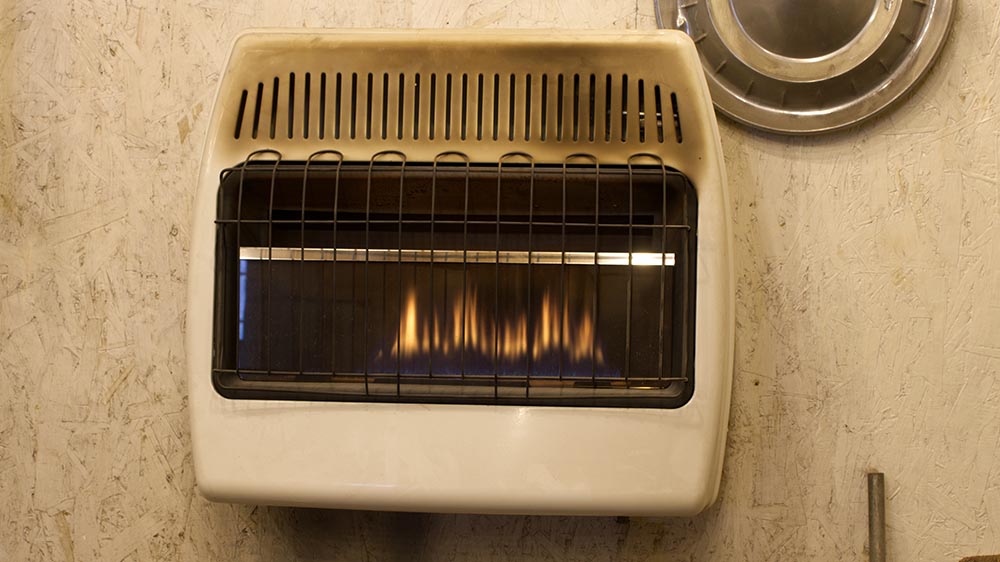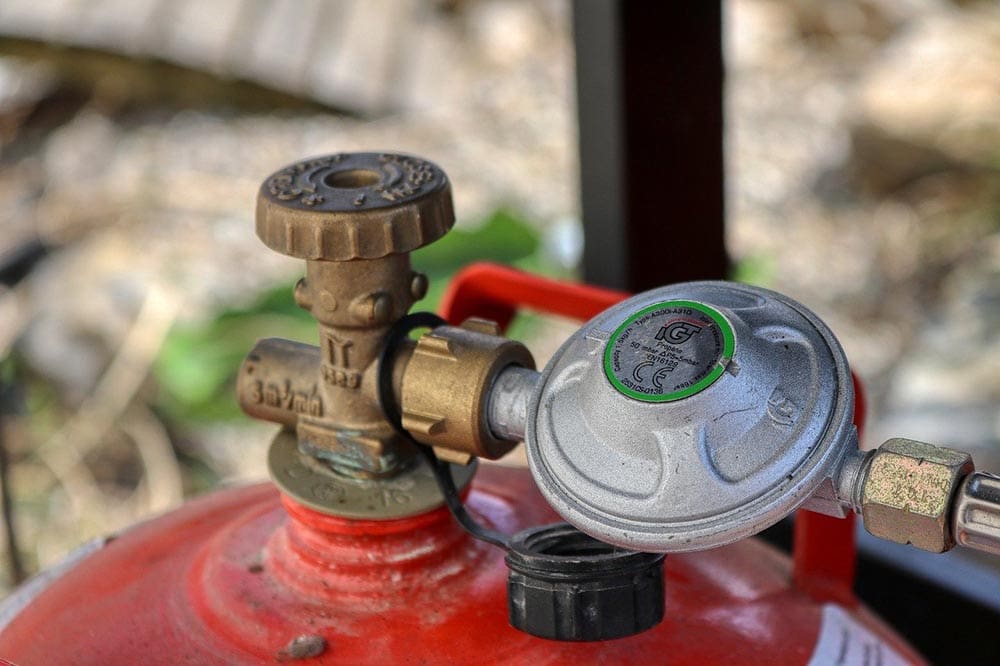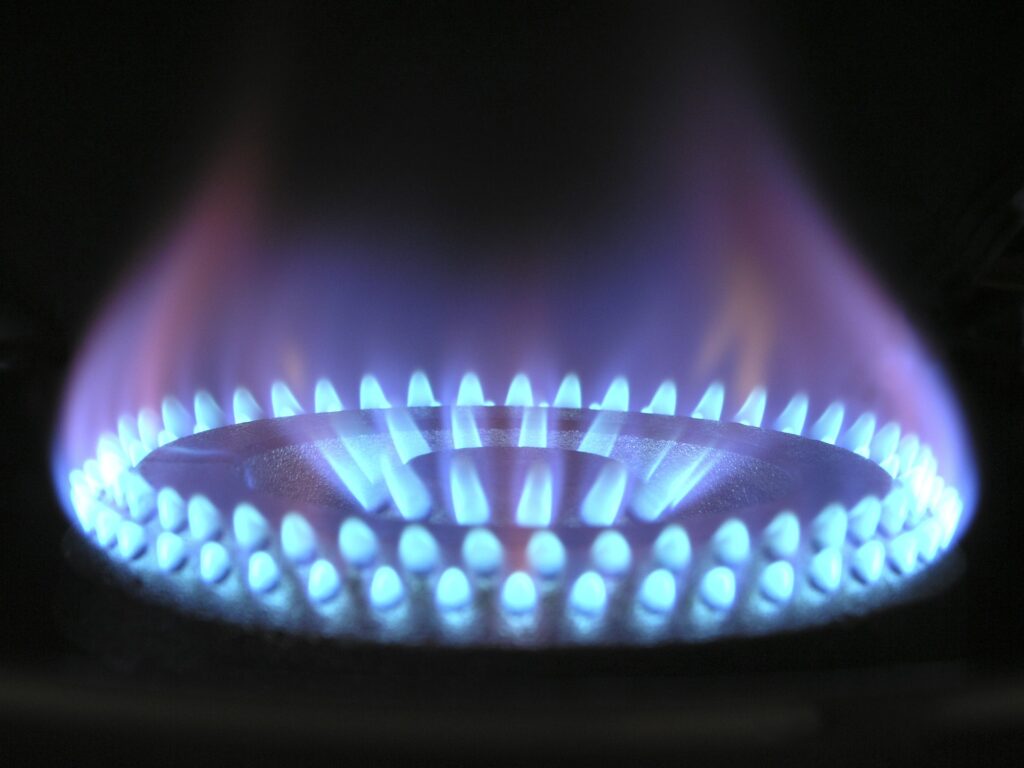How Hot Does Propane Burn? Temperatures, Comparisons & Requirements
-
Pete Ortiz
- Last updated:

Propane is a by-product of petroleum industries and makes for an excellent fuel. Also known as Liquefied petroleum gas (LPG) or LP gas, it is commonly used in construction, manufacturing, and metal works industries. Propane is also used in welding and cutting tools because of its ability to generate heat. It burns at 1960 Celsius (3560 Fahrenheit) or up to 5108 degrees Celsius when combined with pure oxygen.
Since propane is more expensive than other types of fuel, LPG’s unique thermochemical properties make it for use as a fuel. In this article, we will explore how hot propane gas burns and the requirements for flammability and combustion. The article will also compare how hot propane burns compared to other fuels. Read on to learn more.
Burning Requirements for Propane

Propane gas is stored in an extremely cold liquid form. Liquid propane is converted into a gaseous form inside a cylinder. Since propane is colorless and odorless in its natural form, manufacturers usually add a chemical marker to give it a distinctive smell for easier identification.
When propane encounters an oxygen mixture, it ignites. Since it is an alkaline hydrocarbon, as it burns it produces carbon dioxide and water. The combustion process only occurs when propane becomes flammable. If the air is not hot enough, you might need a spark to ignite the gas.
Flammability Requirements¹
For the propane mixture to spontaneously burn, it needs a temperature of at least 920°F. Also, the lower and upper limits of flammability must be present in the air/propane mixture. The limits which range between 2.15% and 9.6% represent the percentage of propane that must be present in the propane/air mixture for it to be combustible. If the mixture has say 5% oxygen and 95% propane, there will not be combustion.
Failure to correctly combine the air/propane mixture could lead to the production of Carbon Monoxide (CO), a very toxic product of incomplete combustion. While the combustion process can generate a lot of heat, it has fewer waste materials compared to gasoline combustion.
The Flash Point
This represents the minimum temperature at which propane can burn on its own after ignition. Once it has ignited, it can burn even when its temperatures are as low as -156°F (-104°C). So, if the outside temperatures are below -156°F, it will not burn on its own. But if the outside temperature warms by just one degree and reaches -157°F, it will burn on its own. Though, if there is a continuous ignition source, propane can burn at a temperature lower than -156°F.
Air Ignition Temperature
For propane to ignite without necessarily needing a flame or spark, it must reach temperatures between 920-1020°F. The propane /air mixture should be within the range of four parts propane to 96 parts oxygen. If the mixture does not combust through these parameters, incomplete combustion occurs, which releases the toxic carbon monoxide gas.

Maximum Flame Temperature
If the temperature exceeds 3595°F, combustion will not occur and the flame will likely stop burning. If using a welding torch to create a flame, the hottest part of the flame is at the tip of the inner cone. Propane flames from a torch tend to have two visible cones. The inner cone is usually the hottest.
In addition, proper storage of propane is vital because it is denser than air. It can sink to lower levels where combustion can be triggered from even coming into contact with the pilot light or another ignition source.
How Do the Temperatures Of Propane Compare to Other Fuels for Different Operations?
1. Acetylene
Acetylene burns about 300–500 degrees hotter than propane. However, this depends on the oxygen available during the combustion process. But being hotter, acetylene is preferred to propane for applications in welding operations.
Acetylene is also preferred to propane because it creates some sort of reducing zone that makes it usable for gas welding. Since propane cannot do this, it is unsuitable for gas welding operations.
When it comes to brazing, propane is a way better choice. However, acetylene is better for braze welding. If used effectively, both fuels can also be used for cutting metal. However, you may need to use different flame parts to get the best cuts out of these liquid gases.
For heating purposes, propane is a better choice due to its thermochemical properties that allow it to generate more heat than acetylene. However, the flame is usually cooler. Also, while propane is cheaper you may need more oxygen for its combustion compared to acetylene. Thus, you may incur more expenses in purchasing oxygen.

2. Natural Gas
Both natural gases and propane may burn at the same temperature of 3,560˚ Fahrenheit, but what is produced from the combustion process is quite different. When propane burns, it produces more energy than natural gas. A single cubic foot of natural gas can produce up to 1,012 BTUs (British Thermal Units) of heat while one cubic foot of LP gas produces about 2,500 BTUs. One BTU represents the energy required to increase one pound of water by 1 degree Fahrenheit.
Since one molecule of LP gas has 3 carbon atoms and 8 hydrogen atoms while natural gas has one carbon atom and four hydrogen atoms, LP is denser than natural gas, and as such, you need more natural gas than propane to finish a single task.
Therefore, on matters of home heating, most people believe that LP burns hotter than natural gas. This is also why the orifices in home appliances that use propane gas are smaller than those for natural gas.
3. MAPP
Methylacetylene Propadiene Propane also known as MAPP-pro, or MAPP, gas is similar to propane and burns way hotter- producing heat up to 600 degrees Fahrenheit above propane. It is a mixture of three gasses and is usually found in yellow canisters, instead of the black, green, or blue canisters that store propane.
MAPP is mainly used for welding operations. However, its applications can even extend to the kitchen where chefs use it to heat the outside of food without affecting the inside. This includes finishing off a crème-Brule or searing a steak.
Due to its extreme heat and volatile nature, it is illegal in several states in America, especially in North America. MAPP-pro may be sold occasionally today, but it has a very different propane percentage in the mixture than MAPP had. This gas may have some advantages over propane in some special circumstances but it is very expensive.
4. Propylene
Propylene burns hotter than propane by roughly 50 degrees Fahrenheit. Yet, it costs much more than propane. It is an ideal fuel for hobbyists for specialized welding applications despite the higher cost because it doesn’t consume as many materials for the price difference to matter. A propylene torch has better heat focus than the standard propane torch.
5. Butane
When ignited, propane and butane torches produce different heat temperatures. During combustion, butane can reach temperatures of up to 2,400 degrees Fahrenheit, which is a good temperature for welding applications. However, propane torches can burn much hotter because their maximum temperature is approximately 3,600 degrees Fahrenheit.
Moreover, despite being portable and compact, the flame produced in butane torches is usually weaker. This makes butane torches suitable for drying wet building materials like cement, soldering silver metals, wiring, and heat-shrinking tubing. Propane torches come equipped with a much larger tank for LP gas storage. Due to the precision of the flame and the high heat produced, propane torches are used in welding operations.

6. Isobutane
Isobutane and propane may burn at similar temperatures and are made from the same atoms, but they are arranged differently. These gases perform differently because propane has a lower boiling point than isobutene, but has a much higher vapor pressure. The difference in properties makes these two gases have varying applications. For instance, propane is ideal for working in cold climates while isobutane works better as a propellant.
Conclusion
Propane is a type of fuel that is widely used in metalworking. When combined with oxygen, it can combust, releasing a lot of heat that makes it great for cutting and welding metal. However, for it to combust, it must reach a maximum temperature of at least 920°F. But it can self-ignite if the temperatures range from 920°F to at least 1,020°F.
When propane is ignited, the hottest part of the flame is the inner cone which when combined with oxygen burns at 2,800 degrees Celsius.
As seen, there are other alternative fuels that you can use for welding operations. Some gases like MAPP burn significantly hotter than propane, while some like butane burn less hot. We hope our comparison of propane and other gases will help you determine which fuel is the best for whichever welding endeavor you might want to undertake.
Featured Image Credit: Corvul, Shutterstock
Contents


